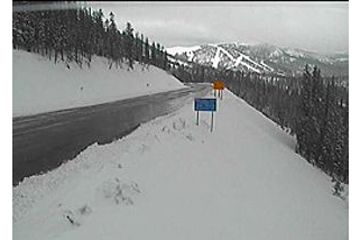Smart Snowplows Aim to Make White Winters Safer

In a push to save money and lives this winter, four U.S. states are dispatching smart snowplows to gather road and weather conditions in almost real-time.
The high-tech vehicles are part of a new digital intelligence system that is being rolled out for testing in parts of Michigan, Minnesota, Nevada and New York.
The system integrates GPS-coded measurements from sensors on the snowplows with computer weather models and satellite and radar observations to produce updates every five to 15 minutes about road and weather conditions. [Weirdo Weather: 7 Rare Weather Events]
These detailed, close to real-time snapshots are then relayed to transportation officials in the hope that they will be able to target the most dangerous stretches of highway before accidents happen.
"We want to reduce that white-knuckle experience of suddenly skidding on ice," scientist Sheldon Drobot, who oversees the design of the system at the National Center for Atmospheric Research in Boulder, Colo., said in a statement. With funds from the U.S. Department of Transportation, NCAR developed the system, which is called the Pikalert Enhanced Maintenance Decision Support System (EMDSS).
"This offers the potential to transform winter driving safety," Drobot added. "It gives road crews an incredibly detailed, mile-by-mile view of road conditions. They can quickly identify the stretches where dangerous ice and snow are building up."
Far-apart observing stations on the ground, which most transportation officials currently rely on for their data, may not be able to pick up localized changes in road conditions that could make for hazardous driving — such as an ice patch developing along a shaded curve.
Sign up for the Live Science daily newsletter now
Get the world’s most fascinating discoveries delivered straight to your inbox.
The smart snowplows, meanwhile, will measure weather conditions like temperature and humidity, picking up subtle changes as they move. The vehicles will also measure road conditions based on indirect clues like whether the plow's antilock brakes activate and whether its windshield wipers are on.
Beyond preventing tragedy on icy roads, the creators of EMDSS hope the system will save states money. Clearing snow and ice is an expensive operation, and unnecessarily laying down sand, salt or chemicals might not only waste funds but also harm the environment, according to NCAR.
Officials with NCAR, which is primarily funded by the National Science Foundation, said EMDSS eventually could be distributed by private vendors or be used in other states if it proves successful this winter.
Follow Megan Gannon on Twitter and Google+. Follow us @livescience, Facebook & Google+. Original article on Live Science.











